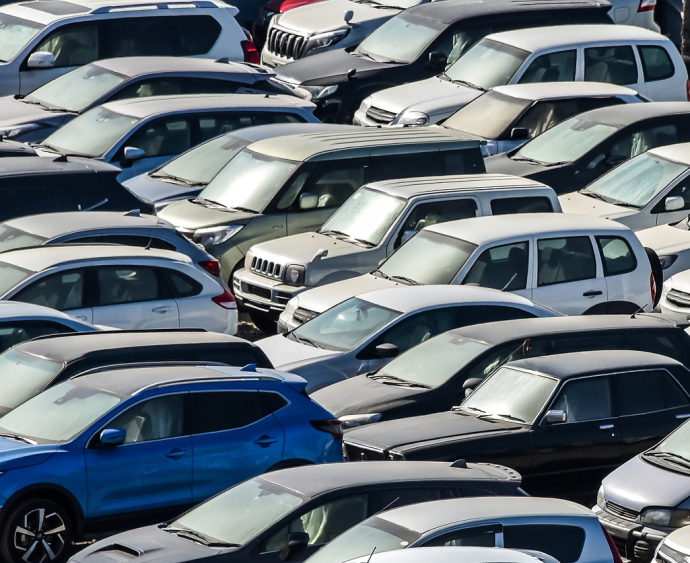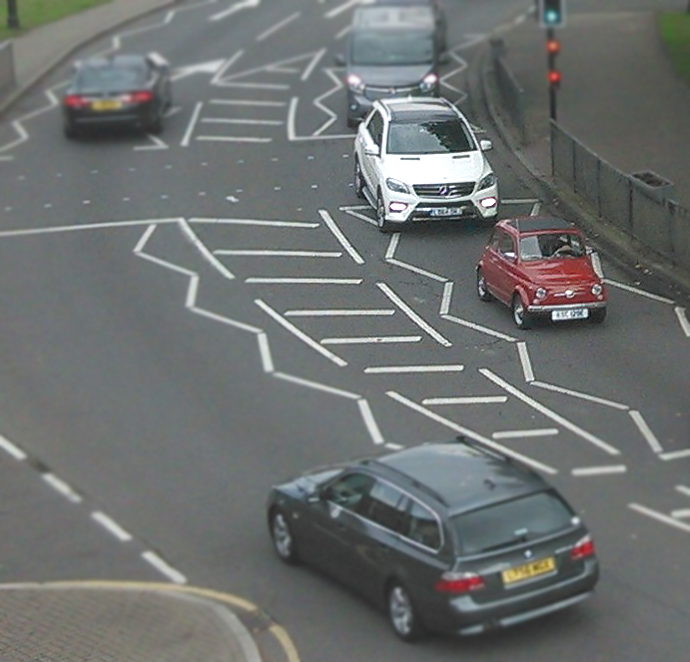
The size of a standard car parking space may be about to grow to keep pace with the ever-increasing width and length of cars.
The dimensions of a standard parking space were prescribed 50 years ago and over the last half century cars have become increasingly bloated. Safety features like side-impact bars have contributed towards the increasing size of cars, but a fashion for heavier, wider and taller SUVs has exacerbated the problem in recent years.

City cars like the original Fiat 500 are dwarfed by today’s SUVs
Cars are getting bigger. An appetite for creature comforts like air conditioning and electric windows has helped pile on the pounds, but it’s the car occupant safety features that have seen the family runabout become ever more tank-like. Everybody wants to remain safe on the roads, but the bigger and heavier the next car, the more robust your own vehicle needs to be. You need only look at how the original mini, or Fiat 500 or VW Golf have become bloated in their middle age. Unfortunately, the real losers are those outside the cars.
So serious is the threat from heavier cars – driven largely by the current fashion for SUVs – that The European Transport Safety Council (ETSC) has called for a ban on SUVs in towns and cities in a bid to cut cyclist and pedestrian fatalities. The risk of severe injury or death for a pedestrian is higher in collisions with Sport Utility Vehicles (SUVs) and vans compared to passenger cars because of the way they are designed: SUVs and vans are stiffer, they have higher bumpers and are heavier.”
Those welcoming calls for increasing the prescribed size for a standard parking space – which would also affect existing car parks – overlook one simple fact. Larger car parking spaces will result in fewer car parking spaces.

Bigger is not always better
When the German-British statistician and economist Ernst Schumacher said “Any intelligent fool can make things bigger, more complex, and more violent. It takes a touch of genius — and a lot of courage to move in the opposite direction“, he was making the case for human-scale, decentralised and appropriate technologies. It’s a shame car makers did not take note.
Sometimes referred to as a micro car, a quadricycle is a four-wheeled vehicle with an unladen mass not more than 400 kg (excluding batteries if it is an electric vehicle) and whose maximum continuous rated power does not exceed 15 kW.
There is a perception that large, heavy cars such as 4X4s are safe, but they pose an increased risk to pedestrian in the event of a collision. Quadricycles on the other hand are designed to operate in urban areas at low speeds and their low weight makes them less of a risk to pedestrians and less damaging to the road surface. In fact, in areas where people live and work, there’s a strong argument that any vehicle larger, heavier and faster than a quadricycle poses an unacceptable risk.
The ethical choice
The ETA was established in 1990 as an ethical provider of green, reliable travel services. Over 30 years on, we continue to offer cycle insurance , breakdown cover and mobility scooter insurance while putting concern for the environment at the heart of all we do.
The Good Shopping Guide judges us to be the UK’s most ethical provider.
Robert
There is a way to respond to this trend without direct confrontation.
When I lived in Japan twenty-odd years ago, I noticed that public parking spaces came in two sizes: normal, and small. The small
bays were often tucked in to gaps that were too small for a full sized bay. Or there would be three small bays where otherwise there would be two “normal” ones.
Drivers could park their car in any marked bay where it would fit. A car left sticking out of a bay would be ticketed or towed. Small cars would fit in any bay, but the large ones would only fit in the “normal” bays.
This meant that drivers of small cars had more spaces available to them that drivers of large cars. So a small car was just that much easier to park, and so just that much more convenient to drive. People could drive large cars if they wanted: they would just have to be prepared to search that much harder for a parking space, walk that much further once they found one.